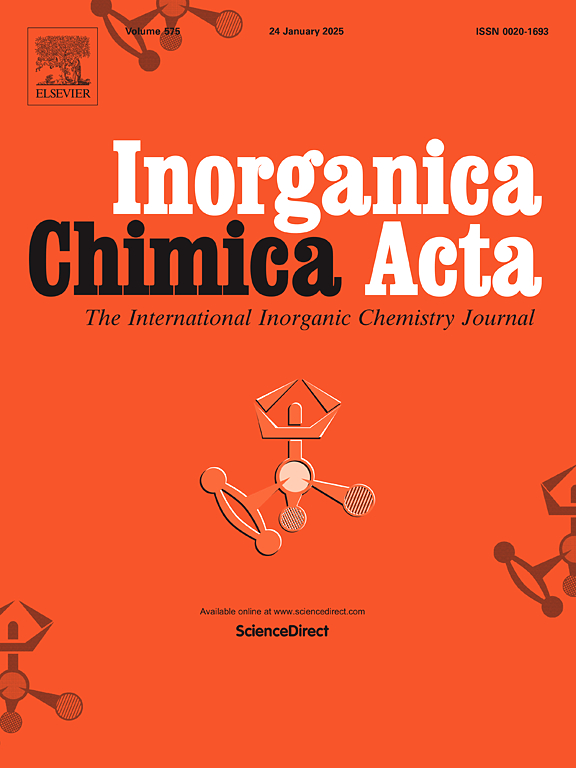Evaluation of anticancer capacity, catalase interactions, molecular docking, and antioxidant studies of some diamagnetic (Pd, Pt, and Zn) Schiff base complexes
IF 2.7
3区 化学
Q2 CHEMISTRY, INORGANIC & NUCLEAR
引用次数: 0
Abstract
New Schiff base complexes, including diamagnetic metal ions (Pd2+/C1, Pt2+/C2, Zn2+/C3), have been synthesized via appropriate conventional methods using 1-phenyl-1-(pyridin-4-ylimino) propan-2-one oxime (PPYO) as a Schiff base ligand. Theoretical studies confirmed that the C1-C3 have high reactivity and pharmacological potential. The antioxidant activity of the C1-C3 was determined using the DPPH (2,2-diphenyl-1-picrylhydrazyl) method and the following trend was obtained: C1 > C2 > C3 > PPYO. These complexes were able to present good cytotoxic effects on HCT116 colon cancer cells. The trend of anticancer activity is as follows: C2 > C1 > C3. Considering the importance of the antioxidant enzyme catalase in removing reactive oxygen species (ROS), the binding process of C1-C3 with catalase was evaluated. The results showed that C1-C3 can inhibit the catalytic performance of catalase. The C1-C3 quenched the catalase fluorescence emission with a static quenching mechanism. The binding affinity to catalase was almost similar for all three complexes (Kb = 6.37 ± 0.33, 3.23 ± 0.14 and 4.57 ± 0.36 × 105 M−1 for C1, C2 and C3, respectively at 303 K). In C1/C2 interaction with catalase, which was an exothermic and spontaneous process, hydrogen bonds, van der Waals forces, and hydrophobic interactions played a decisive role and were strongly confirmed by molecular docking data. Tracking the structural changes of catalase showed that the enzyme undergoes structural changes in the presence of complexes.

求助全文
约1分钟内获得全文
求助全文
来源期刊

Inorganica Chimica Acta
化学-无机化学与核化学
CiteScore
6.00
自引率
3.60%
发文量
440
审稿时长
35 days
期刊介绍:
Inorganica Chimica Acta is an established international forum for all aspects of advanced Inorganic Chemistry. Original papers of high scientific level and interest are published in the form of Articles and Reviews.
Topics covered include:
• chemistry of the main group elements and the d- and f-block metals, including the synthesis, characterization and reactivity of coordination, organometallic, biomimetic, supramolecular coordination compounds, including associated computational studies;
• synthesis, physico-chemical properties, applications of molecule-based nano-scaled clusters and nanomaterials designed using the principles of coordination chemistry, as well as coordination polymers (CPs), metal-organic frameworks (MOFs), metal-organic polyhedra (MPOs);
• reaction mechanisms and physico-chemical investigations computational studies of metalloenzymes and their models;
• applications of inorganic compounds, metallodrugs and molecule-based materials.
Papers composed primarily of structural reports will typically not be considered for publication.
 求助内容:
求助内容: 应助结果提醒方式:
应助结果提醒方式:


